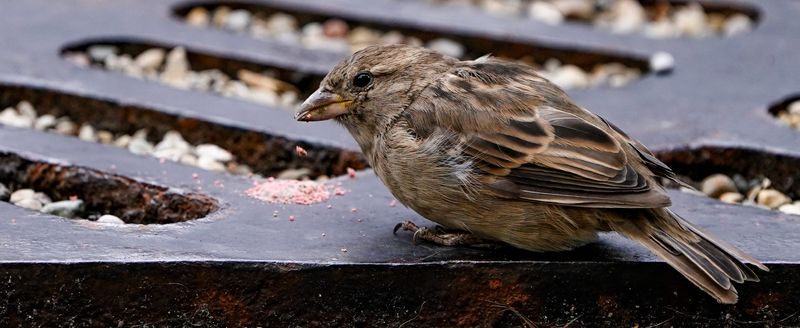Can you believe that October is here already and that three-quarters of 2025 is already behind us? Where does the time go? One way I can tell how fast time flies is in writing my column every other week – and how fast those two weeks go by.
So, it’s October, now what? I have had many questions about why the bird feeding station is not as active as it was a few weeks ago. Not sure if I have all of the answers, but for one, there simply aren’t as many birds around anymore. The majority of the blackbirds have left. Yes, it’s still possible to see some large flocks of migrating blackbirds but chances of them stopping at your feeding station are slim.

Between now and all of winter, you may see some sizeable flocks of dark looking birds – and those are usually massive flocks of European Starlings – very pesty birds which are invasives that were brought here by immigrant ships over the last couple of centuries.
Starlings are NOT members of the blackbird family, though they are generally dark colored. During the winter, Starlings are blackish with many white speckles. They have caused a huge imbalance of nature as they occupy hollow cavities in many habitats around North America which deprives many of our native cavity-nesting birds of places to nest. I don’t want to waste any more precious space discussing Starlings so let’s move on!
Another reason that feeder activity may be low right now is that our year-round birds are finding plenty of food in the weedy fields and woodland forests and hedgerows like weed and tree seeds, wild and ornamental berries, nuts of all sorts, and a healthy crop of insects in various forms of eggs, cocoons, etc.
As October weather cools and progresses toward November we should see more action at the feeders. Now, factor in the arrival of some of our northern and higher elevation species of birds – some of which will head further south.
White-throated and White-crowned Sparrows are rolling in now from the north and many will stay here for the winter. I love having a few of both of these larger native sparrow species around all winter so I feed plenty of (good) mix – or more specifically white millet – on the ground now and all through the winter. Many other birds also like feeding on the ground including the Dark-eyed Juncos which will also be showing up in small flocks as winter get nearer. You will notice them as they flash their white tails as they fly up from the ground.
Right now, and all through fall, is a good time to watch the birds that are sifting through your flower beds around the house as they glean various insects and seeds around your shrubbery, and gradually they will be attracted to the seeds at the feeder and especially the seeds on the ground. You may have noticed that the Red-breasted Nuthatches have become much more popular. Listen for their much more nasal call than our year-round White-breasted Nuthatches.
We will be watching for a variety of birds that generally don’t come to the bird feeders such as Mockingbirds, Robins, Bluebirds, Cedar Waxwings, Golden-crowned Kinglets, and Hermit Thrushes.
Right now, Cedar Waxwings are starting to form larger flocks as they search for food. Recently at Genesee County Park (GCP) I watched about 50 or even more of them gorging on pokeberries. Some winters it’s hard to find Cedar Waxwings as they travel to where the food supply is the best. Non-feeder birds do love to eat a variety of wild berries.
At GCP I also noticed a particular tree that is totally engulfed in poison ivy vines and these vines are loaded with their white berries. This particular location will be interesting to watch this fall and winter as many birds love them. From past experience here on the farm I have noticed that Flickers, Pileated Woodpeckers, and Yellow-rumped Warblers all enjoy them. Yes, the wild berry supply and various tree seeds, including white birch seed catkins, all make for a great natural winter “bird feeding station” in the wild which can be just as much fun as looking out your window!
Enjoy the beautiful fall foliage and blooming purple asters right now. There are so many neat combinations that our world of flora has to offer us. Now is the time for them to shine while we take a little break from the birds! We know how fast time flies and how fast things change in fall. One minute the foliage is phenomenal and then comes a wind storm and everyone wishes they had spent a little more time enjoying the leaves. Priorities!
So, I will see you out there absorbing the beauty as we use this wonderful month to prepare for the next season! As always, feel free to share your comments, observations, etc. with me, Hans Kunze, via text or call at 585-813-2676 and please do remember to thank God for the abundance of nature all around us!
— Hans Kunze writes a New York state-focused birding column.
This article originally appeared on Elmira Star-Gazette: Bird feeding stations are not as active in October. Here’s when activity will pick back up
Reporting by Hans Kunze / Elmira Star-Gazette
USA TODAY Network via Reuters Connect


